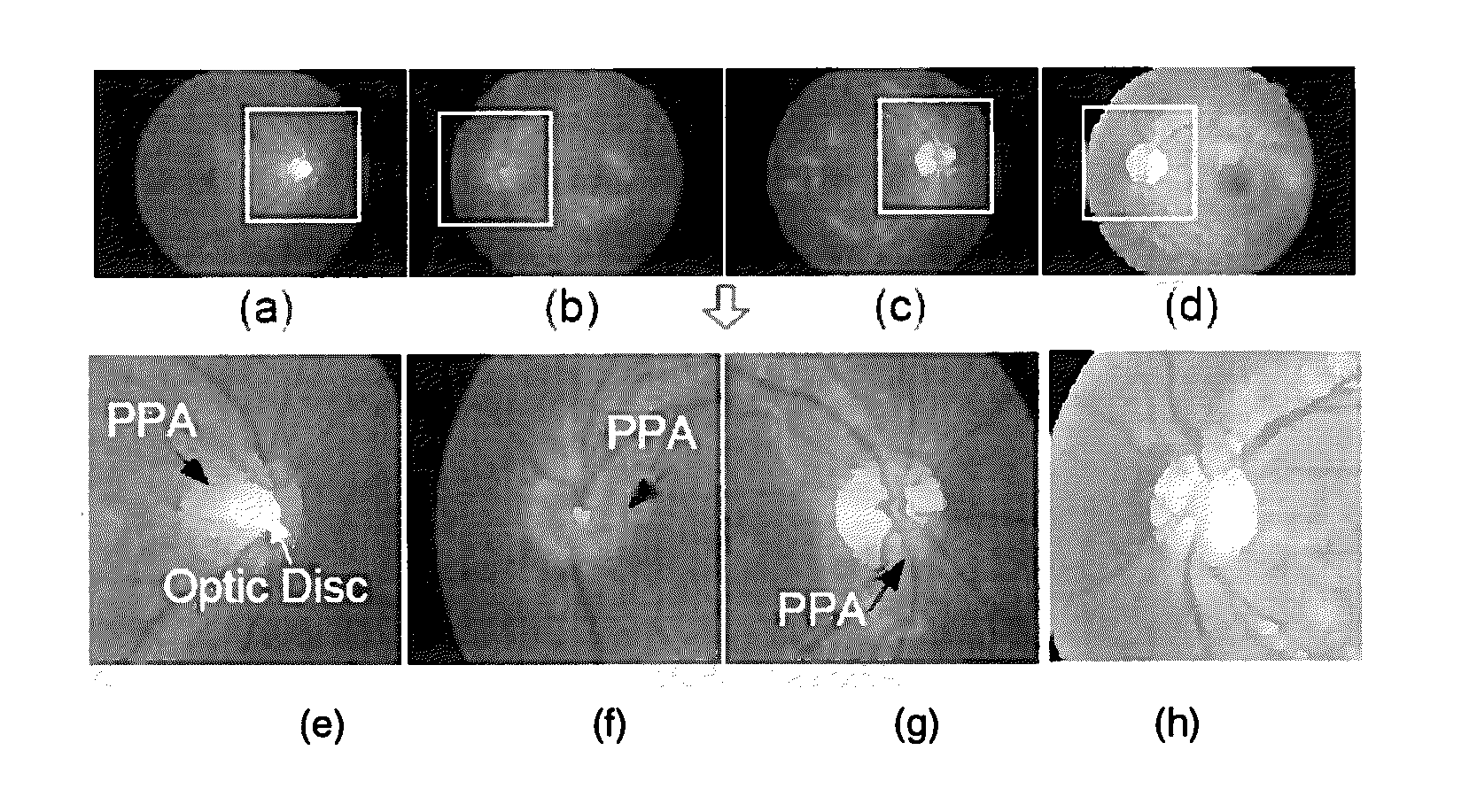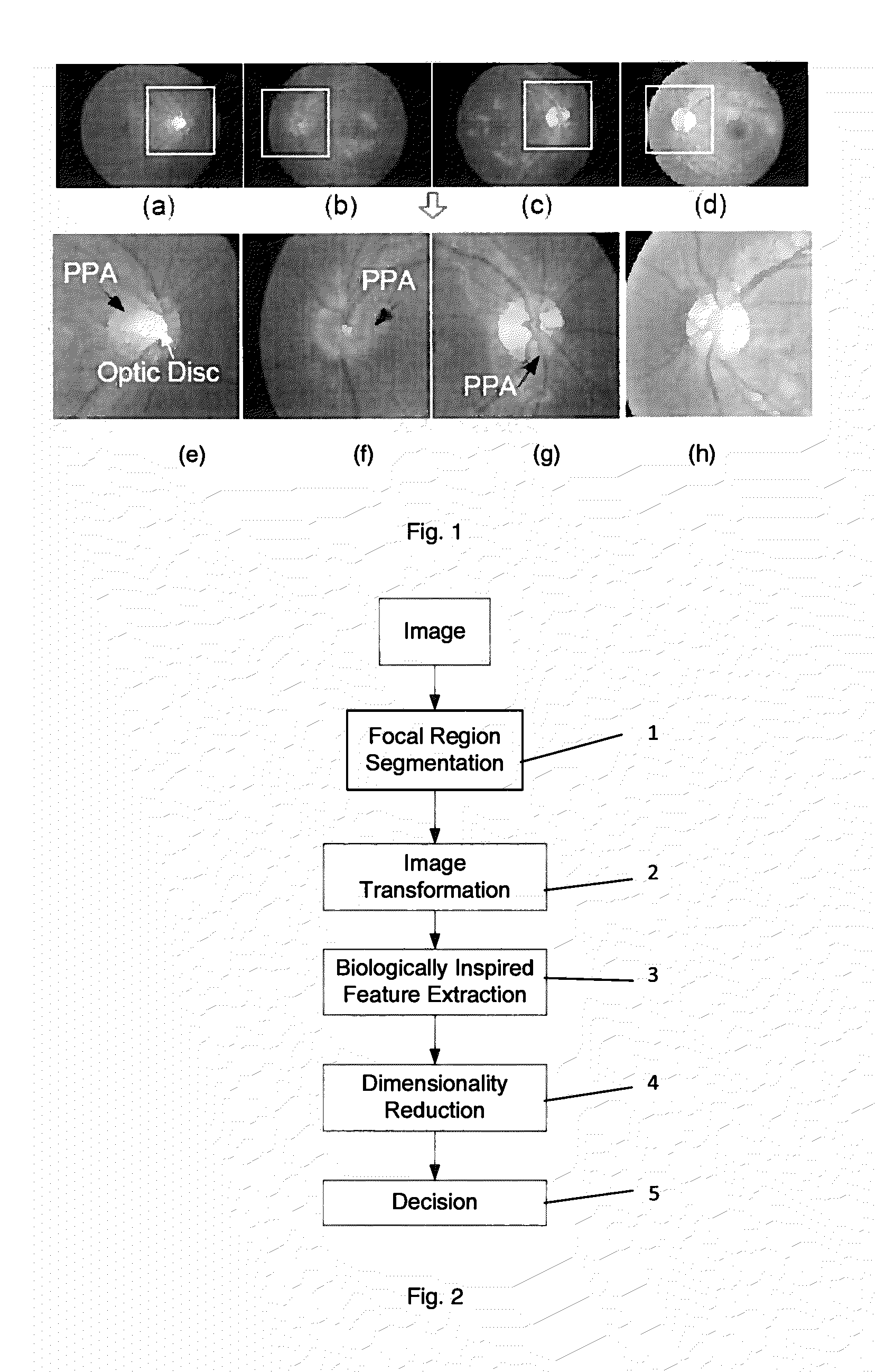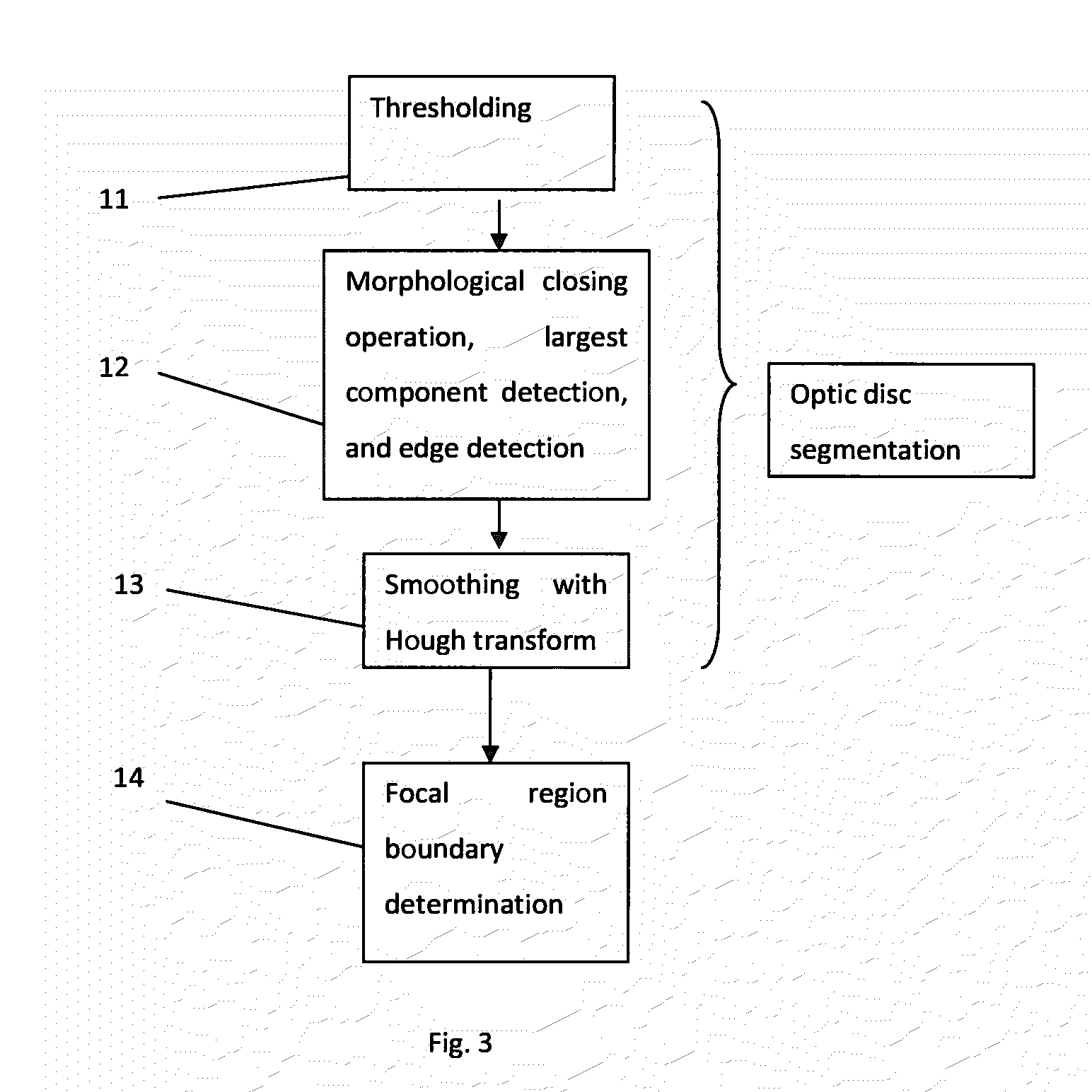Methods and systems for detecting peripapillary atrophy
a technology of peripapillary atrophy and methods and systems, applied in image analysis, medical science, image enhancement, etc., can solve the problem that computers cannot perform as well as humans on visual recognition, and achieve the effect of reducing the workload of medical professionals and reducing the likelihood of occurren
- Summary
- Abstract
- Description
- Claims
- Application Information
AI Technical Summary
Benefits of technology
Problems solved by technology
Method used
Image
Examples
Embodiment Construction
[0034]Referring to FIG. 2, a flowchart is shown of an embodiment of the invention. The input to the flowchart is a single image of the rear of an eye: typically a conventional fundus image. The embodiment is one for determining whether the eye exhibits PPA.
[0035]In a first step 1, a “focal region” is identified in the image. This focal region is a region which includes the periphery of the optic disc, and thus includes the area which typically includes PPA.
[0036]In step 2, the focal region is transformed into a rectangular transformed image. A plurality of sub-regions are defined, such as by partitioning the focal region into non-overlapping rectangular blocks which collectively cover the focal region.
[0037]In step 3, a plurality of biologically-inspired features (BIF) are obtained for each of the sub-regions.
[0038]In step 4, the BIF for all of the sub-regions are subject to an optional dimensionality reduction step, which produces a plurality of second numerical measures. The numbe...
PUM
 Login to View More
Login to View More Abstract
Description
Claims
Application Information
 Login to View More
Login to View More - R&D
- Intellectual Property
- Life Sciences
- Materials
- Tech Scout
- Unparalleled Data Quality
- Higher Quality Content
- 60% Fewer Hallucinations
Browse by: Latest US Patents, China's latest patents, Technical Efficacy Thesaurus, Application Domain, Technology Topic, Popular Technical Reports.
© 2025 PatSnap. All rights reserved.Legal|Privacy policy|Modern Slavery Act Transparency Statement|Sitemap|About US| Contact US: help@patsnap.com



